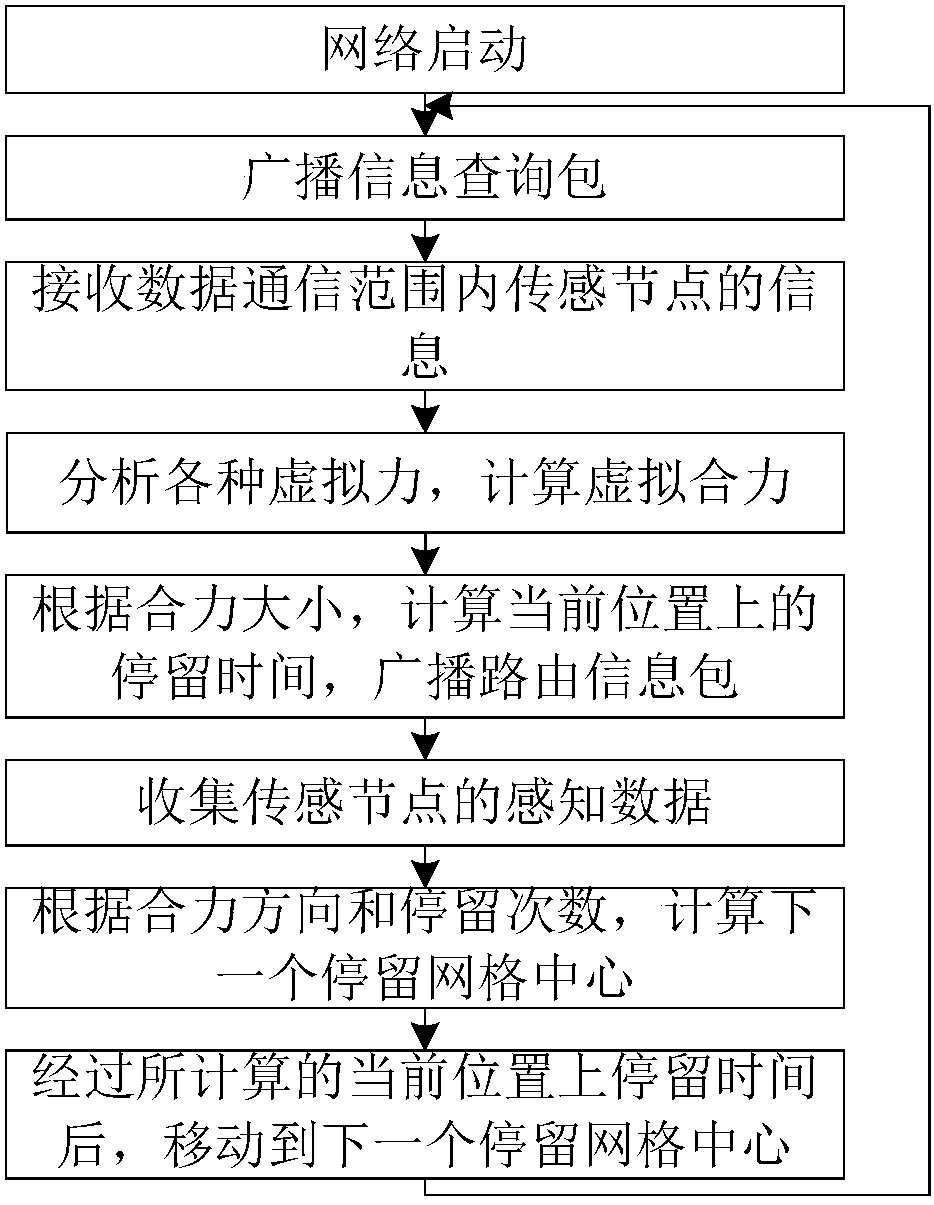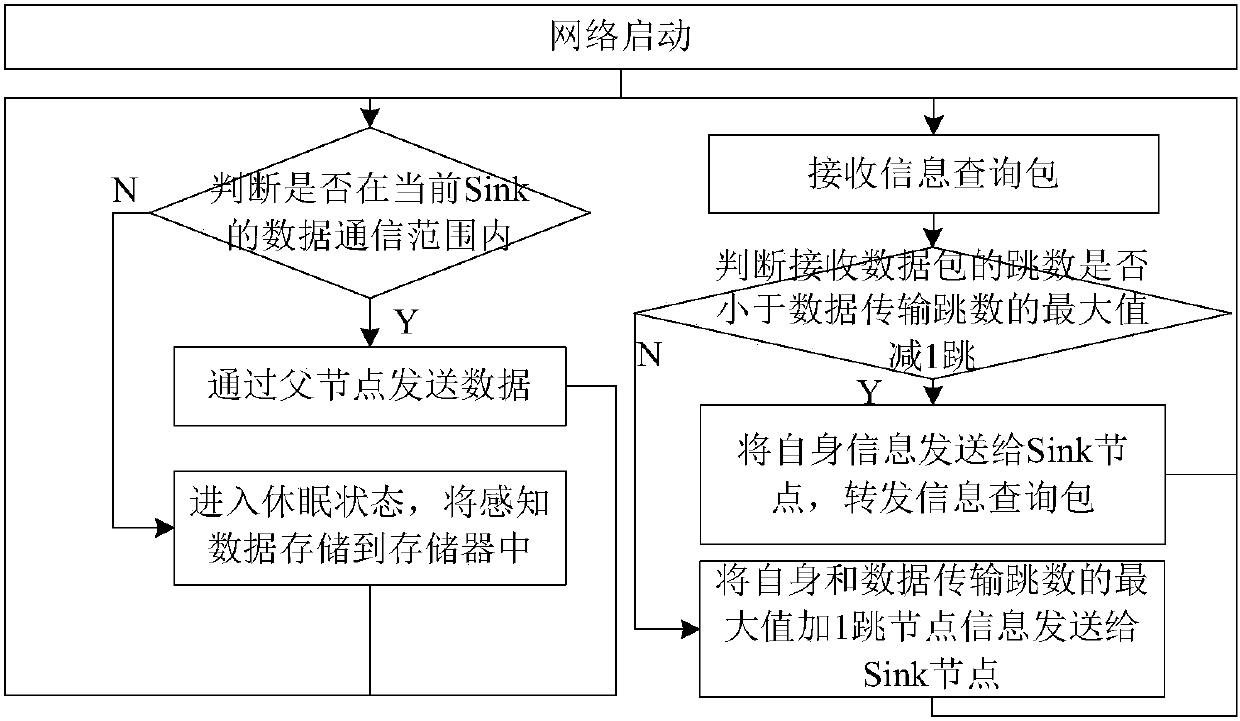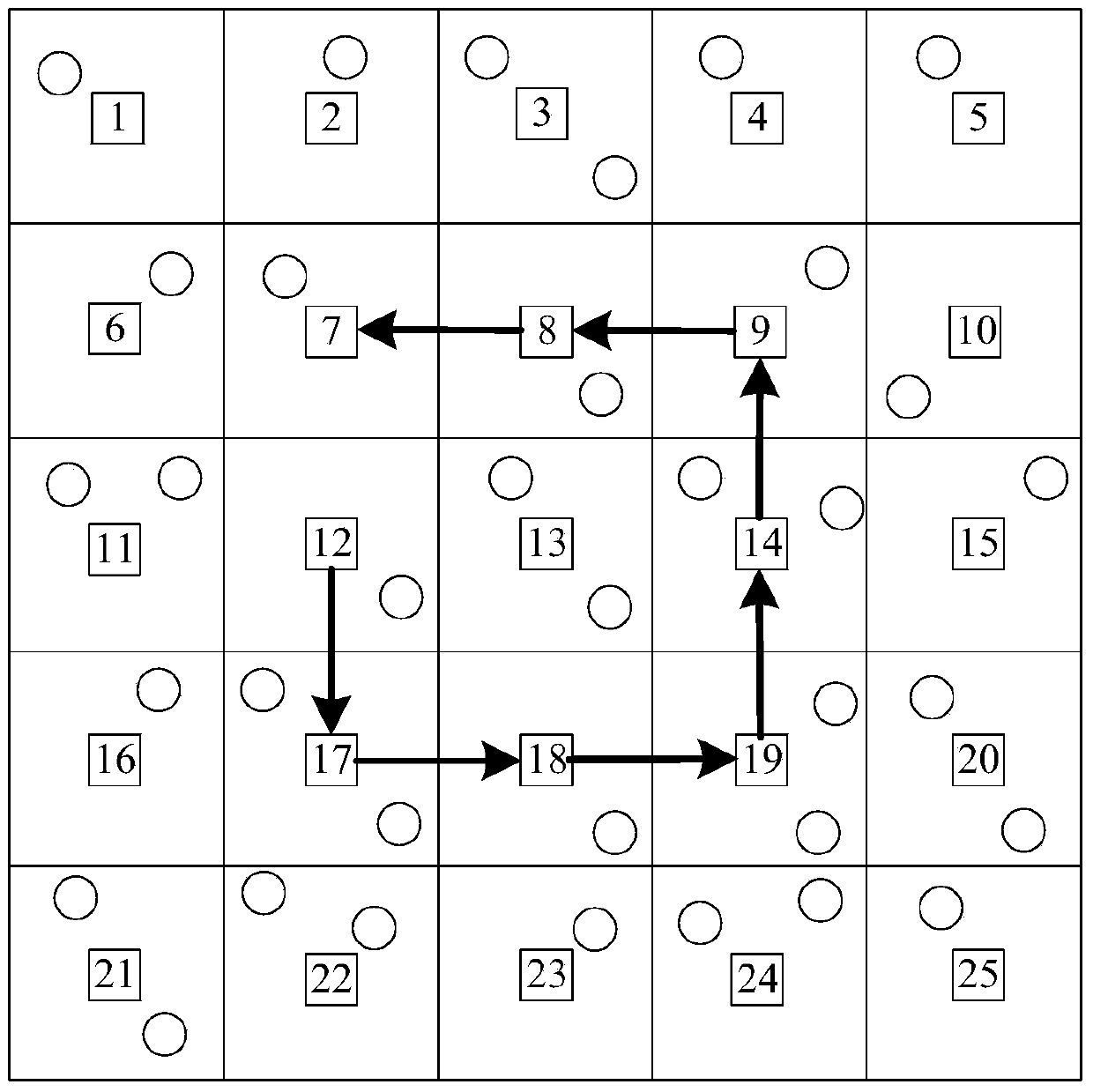A distributed selection method for sink node moving path with limited data transmission delay and number of hops
A technology of data transmission and movement path, applied in advanced technology, climate sustainability, sustainable communication technology, etc., can solve the problems of large amount of data discarding, large time complexity, low data collection amount and low node coverage.
- Summary
- Abstract
- Description
- Claims
- Application Information
AI Technical Summary
Problems solved by technology
Method used
Image
Examples
Embodiment approach
[0049] 1.2) The Sink node analyzes the boundary, obstacles and voids around the current location, and calculates the virtual repulsion of the boundary, the virtual repulsion of obstacles, the virtual repulsion of holes, and the number of hops to the sink node is the maximum number of data transmission hops plus 1. Gravity, calculate the resultant force of virtual forces. The specific preferred implementation method of this step is as follows:
[0050] a1) The Sink node takes the current location as the center to construct a virtual grid. If there are no sensor nodes in the grid, it is defined that the grid is not covered. Reference image 3 , Divide the monitoring area of the wireless sensor network into n×n grids, and according to the grid position from left to right, from top to bottom, all grids from 1 to n 2 Numbered separately. Among them, n represents the number of grids in each row or column. n can be determined according to the position distribution of the sensor nod...
PUM
 Login to View More
Login to View More Abstract
Description
Claims
Application Information
 Login to View More
Login to View More - R&D
- Intellectual Property
- Life Sciences
- Materials
- Tech Scout
- Unparalleled Data Quality
- Higher Quality Content
- 60% Fewer Hallucinations
Browse by: Latest US Patents, China's latest patents, Technical Efficacy Thesaurus, Application Domain, Technology Topic, Popular Technical Reports.
© 2025 PatSnap. All rights reserved.Legal|Privacy policy|Modern Slavery Act Transparency Statement|Sitemap|About US| Contact US: help@patsnap.com



